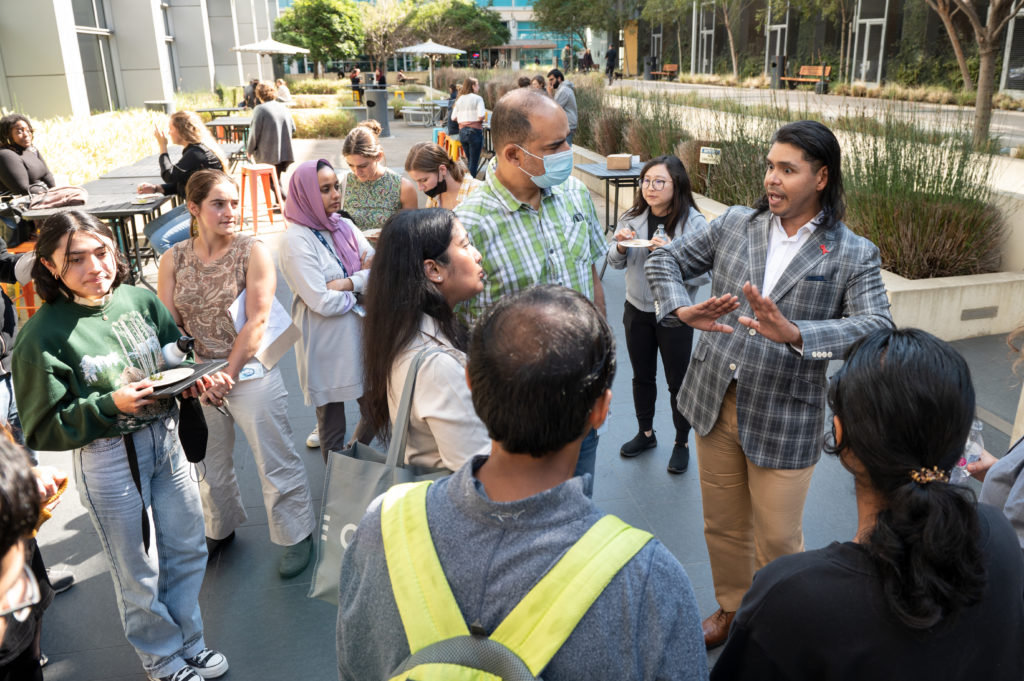Archives: Lab News
Ott Lab news stories
People living with HIV share their experiences as cure research participants
To develop an HIV cure, most clinical studies involve an analytical treatment interruption (ATI)—a study participant who is living with HIV voluntarily temporarily stops taking their antiretroviral treatment (ART) regimen. Currently, this is the only way to determine if a potential cure strategy will work without ART.
ACTIVELY INVOLVEMENT
ATI: ‘A trial interruptus’ Actively Involvement: Thomas J. Villa
Thomas J. Villa works to help end the HIV epidemic as a writer, Community Advisor to and serial participant in HIV clinical research. Tom is an Ambassador for the HOPE Martin Delaney Collaboratory for HIV Cure Research, a Community Advisor to the RID Martin Delaney Collaboratory, and a contributor to the AIDS Clinical Trials Group (ACTG) Partner Protection Working Group.
ACTIVELY INVOLVEMENT: THOMAS J. VILLA
Harold McIntyre and Alecia Tramel-McIntyre
Harold McIntyre and Alecia Tramel-McIntyre
Alecia Tramel-McIntyre and Harold McIntyre are known in the community as Mr. and Mrs. HIV. The couple shares how they found each other after diagnosis and use their love story to raise awareness.
Research in Action: Arts build HOPE and a bridge between science and public
Research in Action: Arts build HOPE and a bridge between science and public
Published in The Chronicle Journal Thursday, January 31, 2023.
BY JULIO HELENO GOMES
A world-wide effort to find a lasting cure for one of the biggest epidemics of the modern age is using art to help researchers understand how their work is being perceived and to engage the public in reaching their goal. One of the community engagement leaders is an award-winning Lakehead University professor who hopes such artworks will be on display in Thunder Bay, for Lakehead’s Research and Innovation Week, to shed light on research into HIV, the human immunodeficiency virus.
Check out the rest of the article here.
Go Behind-The-Scenes: World AIDS Day 2022
Get a behind-the-scenes glance at what researchers are working on to uncover a cure for HIV. Raif Derrazi, HOPE’s CAB member, will catch up with Melanie Ott as she tours a biosafety lab at Gladstone Institutes and answers your questions about her HIV research.
This Instagram Live event will include a conversation with Patricia Defechereux. She will walk through an art exhibit presented as part of the Community Arts Integrated Research (CAIR) program that uses the creation of art as a vehicle for investigating and developing HIV cure education.
Message from a 52-year-old Australian mother with HIV living in Sydney recently diagnosed in October:
“If you haven’t watched/listened to Raif’s interview (on his IG) at Gladstone Institute on the research being done to find a cure for HIV, please watch it. It was so informative and their knowledge is mind-blowing. Seeing how passionate and dedicated the scientists are, who are heading up this research, has given me so much hope, that they will find a cure. Not only that, but knowing that these people, who have no idea who we are, are fighting for us, filled me with hope and gratitude. Thank you Gladstone Institute and thank you @RaifDerrazi, I feel so lucky to have found you”
The Search for a Cure
Research has turned HIV from a fatal infection into a chronic illness. Now, scientists want to liberate those living with the virus by subduing it for good.
HOPE’s Investigator, Cedric Feschotte is featured in Science Magazine “Ancient virus may be protecting the human placenta”
HOPE’s Investigator, Cedric Feschotte, is helping to “scan the human genome for ERV sequences they suspected might encode proteins- Ancient virus may be protecting the human placenta”
Dr. Pauline Sameshima Receives Teaching Innovation Award
Dr. Pauline Sameshima Receives Teaching Innovation Award
“Dr. Pauline Sameshima (Professor and Canada Research Chair in Arts Integrated Studies) has received a 2022 Teaching Innovation Award from Lakehead University’s Senate Teaching and Learning Committee.
The Committee highlighted Pauline’s implementation of the “the Slides Strategy,” a teaching technique that “stimulates high levels of engagement in students, allowing them to understand each other’s perspectives well and affording much more creativity and the ability to participate in reading assignments to a greater depth than existing alternatives.”
The Teaching Innovation Award recognizes the development and/or implementation of innovative pedagogical practices and technologies.
For an explanation of “the Slides Strategy,” please see the publication by Pauline Sameshima and Tashya Orasi, “What’s better than the asynchronous discussion post?”
Congratulations, Pauline!”
In Conversations with Adam Castillejo, the London Patient
Adam is one of a very small group of individuals who have been “cured” of HIV following stem cell transplantation and has become a global advocate for HIV Cure research.
The HOPE Collaboratory had the honor of hosting Adam Castillejo, the London Patient for a panel to hear about his experience through this unique and challenging process. Joined by clinicians, scientists, and community members from the Gladstone Institutes, the San Francisco AIDS Foundation, and several HOPE institutions discussed the impact and hurdles associated with developing an HIV Cure.
Adam Castillejo, the London Patient
Meet the 2nd Person Cured of HIV, aka the “London Patient”
Introducing the Panelists:
Monica Gandhi, MD, MPH, HOPE SAB Member, Director of CFAR, Medical Director of the Ward 86 HIV clinic
Kim Koester, PhD, Assistant Professor, School of Medicine, Researcher at CAPS
Luis Gutierrez-Mock, MA, MPH. HOPE CAB Member, Pandemic Response Specialist
Lishomwa Ndhlovu, M.D., Ph.D. Professor of Immunology in Medicine, Infectious Diseases











